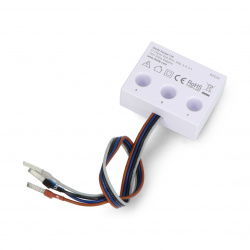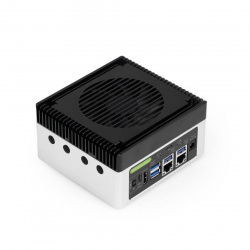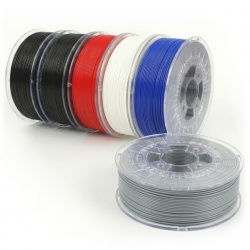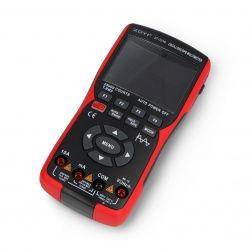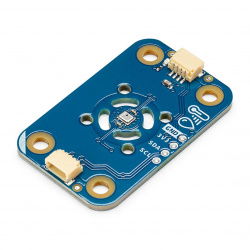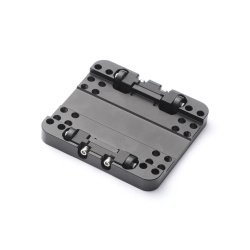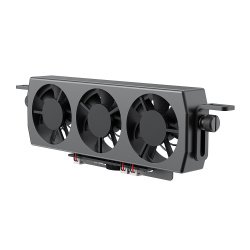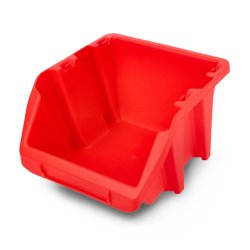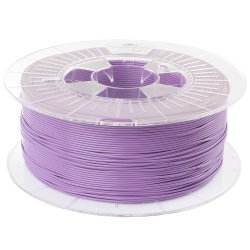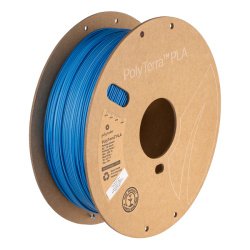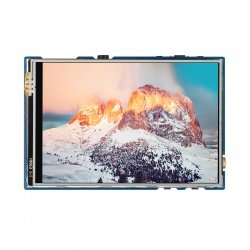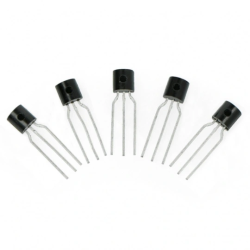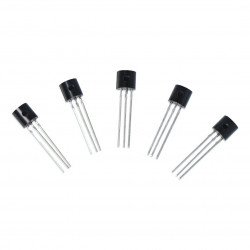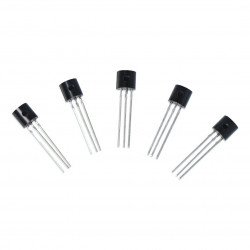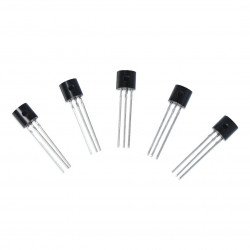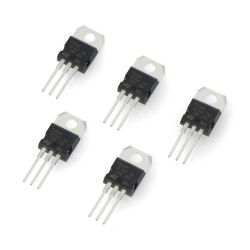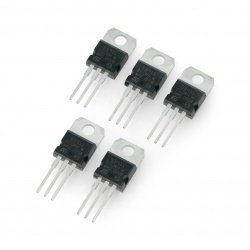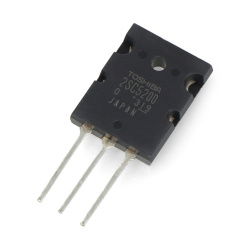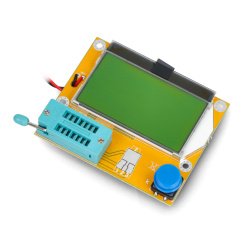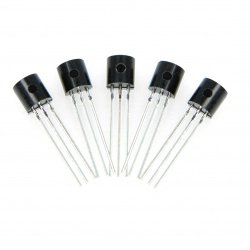Bipolar transistors
Bipolar transistor NPN BC639 80V/1A - 5pcs
Bipolar transistor NPN, 80 V, 1 A. Pinout: ECB. Price for 5 pieces.Bipolar transistor NPN BC338-40 25V/0,8A - 5pcs
NPN bipolar transistor, 25 V, 0.8 A. Lead arrangement: CBE. Price for 5 pieces .Bipolar transistor NPN BC337-40 45V / 0,8A - 5pcs
Bipolar transistor NPN, 45 V, 0.8 A. Pinout: CBE. Price for 5 pieces.Bipolar transistor NPN 2N2222A ST - 5pcs.
Set of five NPN 2N2222A bipolar transistors in TO-92 package. Transistors are equipped with three leads: emitter, base, collector. They are designed for through-hole THT...Bipolar transistor NPN BC547B 50V/0,1A - 5pcs
Bipolar transistor NPN, 50 V, 100 mA. Pinout: CBE. Price for 5 pieces.Bipolar transistor PNP BC556B 65V/0,1A - 5pcs.
Set of five PNP BC556B bipolar transistors in TO-92 package. Transistors equipped with three leads: emitter, base, collector. They are designed for through-hole THT...Bipolar transistor NPN BC546B 65V/0,1A - 5pcs.
Bipolar transistor NPN, 65 V, 0.1 A. Pinout: CBE. Price for 5 pieces.Bipolar transistor NPN 2N3904 40V/0,2A - 5pcs
Bipolar transistor NPN, 40 V, 0.2 A. Pinout ECB. Price for 5 pieces.Bipolar transistor PNP BC557C 45V / 0,1A - 5pcs
Bipolar transistor PNP, 45 V / 0.1 A. Pinout: ECB. Price for 5 pieces.Bipolar transistor NPN Darlington MPSA29 100V/0.8A
Bipolar transistor NPN, 100 V, 800 mA. Pinout: ECB. Price for 1 piece.Darlington TIP122 100V/5A NPN bipolar transistor - 5pcs.
The TIP122 is an NPN Darlington bipolar transistor that supports a collector current of up to 5 A and a collector-emitter voltage of up to 100 V , offering a high current...Set of NPN and PNP bipolar transistors TO-92 - 15 values - E49 - 300pcs. - justPi
This set of NPN and PNP bipolar transistors includes 15 different types , 20 pieces each. The set contains a total of 300 transistors . All components are housed in a...- New
Bipolar transistor NPN BD911 100V/15A - 5 pcs.
NPN bipolar transistor, 100 V, 15 A. Lead arrangement: BCE. Price for 5 pieces.NPN bipolar transistor 2SC5200 230V/15A - THT
The 2SC5200 is an NPN bipolar transistor supporting a maximum collector-emitter voltage of 230 V and a collector current of up to 15 A. It has a TO-264 package and is...Test kit, THT electronic components tester - BTE-056
Kit for testing and recognition of electronic components such as PNP, NPN bipolar transistors, MOSFET transistors with P and N channels and diodes. Built-in screen allows to...Bipolar transistor NPN KSP13-K33 30V/0,5A - 5pcs.
Set of five bipolar NPN BC556B transistors in TO-92 package. Transistors equipped with three leads: emitter, base, collector. They are designed for through-hole THT...See also
BJT transistor – the most basic discrete elements
The bipolar blade transistor was invented in December 1947 at Bell Telephone Laboratories by John Bardeen and Walter Brattain, working under the supervision of William Shockley. The next iteration of this design, the bipolar junction transistor (BJT) , was invented by Shockley a year later. This opened up enormous possibilities in electronics. Transistors replaced vacuum tubes . They are better, smaller and more energy-efficient , but the technology of producing this type of elements has changed dramatically since their invention until today. However, it is still an integral element of every electronic system. Transistors not only allowed us to reduce the size of radios and TVs, but also enabled the creation of integrated circuits that often contain millions of transistors in their structure.
How are bipolar transistors constructed? What influences the flow of current?
A bipolar transistor consists of three differently doped semiconductor regions - emitter, base and collector . These regions are P- or N-doped and arranged alternately. Each semiconductor region is connected to a terminal, labeled accordingly - emitter (E), base (B) and collector (C). The base is placed between the emitter and collector and is made of a lightly doped, high-resistance material. The collector surrounds the emitter region, making it almost impossible for electrons injected into the base region to escape without collecting them, and the resulting common-base gain value is very close to unity, thus giving the transistor a large common-collector gain value. The current gain of a transistor depends on its type.
Bipolar transistor - NPN and PNP elements - differences in structure and operation
The order in which the P and N layers are arranged in a bipolar transistor determines its type and operation . BJTs are available in two types or polarities, known as PNP and NPN . An NPN transistor contains two semiconductor junctions that share a thin P-doped region, while a PNP transistor contains two semiconductor junctions that share a thin N-doped region. NPN is one of two types of bipolar transistors. It consists of a layer of P-doped semiconductor between two N-doped layers. The small current flowing (entering) into the base (called base current) is amplified to produce a large collector and emitter current. The presence of an NPN transistor is necessary to obtain a large collector current.
When there is a positive potential difference, measured from the base to the emitter, the transistor is active. PNP transistors are constructed in exactly the opposite way. They also have the opposite effect. They are active when there is no voltage on the base. Are you interested in additional information about the NPN transistor? Don't know how to check the collector current ratio or emitter current? Or maybe you are interested in interesting facts related to the NPN transistor? If so, we encourage you to read our blog , where we publish valuable entries and practical information.
Bipolar transistors - FAQ
Bipolar transistors can be found, among others, in the power amplifiers of some audio amplifiers, as well as in the analog tracks of acoustic preamplifiers. A common application of BJT transistors is switching (switching) loads, e.g. relay coils .
In the past, bipolar transistors were the basis for the construction of almost all electronic systems (including even integrated circuits). Today, BJT transistors are most often used to control loads , although they can also be found in some audio designs.
Bipolar transistors have three terminals called base (B), collector (C or - in Polish literature - K) and emitter (E).
A transistor is a semiconductor device used primarily to amplify signals. Bipolar transistors control the current in the collector-emitter circuit based on many times (50x or more) smaller current flowing through the base.






























































































































































































































































































































